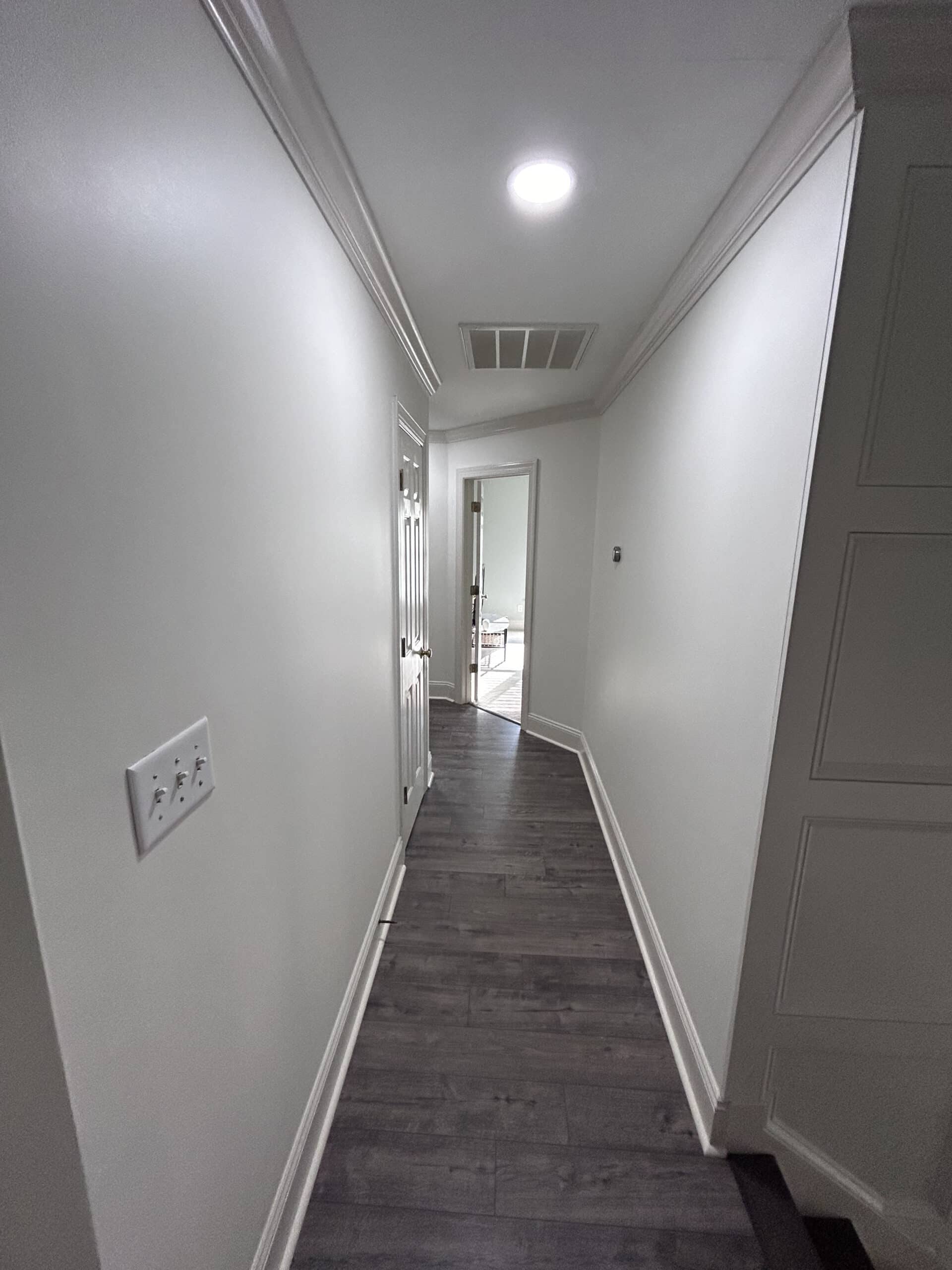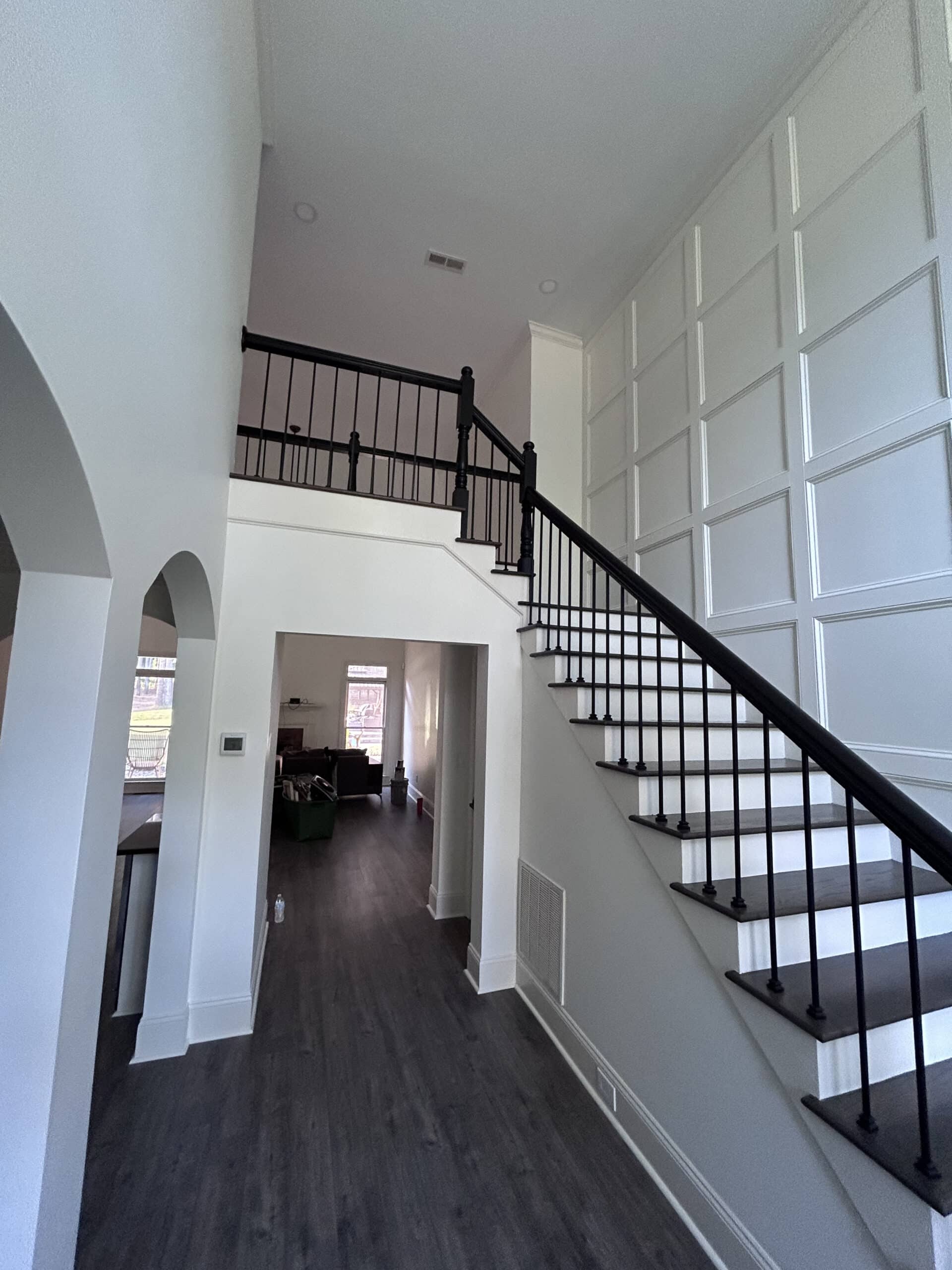A fresh coat of interior paint can transform your home, giving it a clean, modern, and inviting look. However, over time, even the best-quality paint can start to fade, chip, or peel, especially with daily wear and tear. If you want your interior paint to stay vibrant and intact for years to come, it’s essential to follow proper preparation, application, and maintenance practices.
In this comprehensive guide, we’ll share expert tips on how to make interior paint last longer, ensuring that your investment remains beautiful, durable, and low-maintenance for years to come. Whether you’re repainting a single room or your entire home, these strategies will help you achieve a long-lasting, professional-looking finish.

1. Choose High-Quality Paint and Primer
The foundation of a long-lasting paint job starts with selecting the right products:
- Invest in Premium Paints: High-quality paints contain better pigments, binders, and additives that resist fading, staining, and peeling. Look for paints labeled as “interior durable” or “scrubbable” for high-traffic areas.
- Opt for the Right Finish: Satin, eggshell, or semi-gloss finishes tend to be more resistant to moisture and easier to clean, making them ideal for kitchens, bathrooms, and hallways.
- Use a Good Primer: Applying a primer tailored to your wall surface ensures better adhesion, especially if you’re painting over a darker color, a glossy finish, or stained walls. Primers also help seal stains and prevent bleed-through.
High-quality products might cost more upfront, but they pay off by lasting longer and maintaining their appearance.
2. Proper Surface Preparation
A smooth, clean, and well-prepared surface is crucial for paint longevity:
- Clean the Walls: Remove dirt, dust, grease, and cobwebs using a mild detergent or specialized wall cleaner. Dirty surfaces prevent paint from adhering properly.
- Repair Imperfections: Fill holes, cracks, and dents with spackle or joint compound. Sand the area smooth once dried.
- Sand Glossy or Slick Surfaces: Lightly sand any glossy or slick areas to create a better grip for paint.
- Ensure Dry Surfaces: Make sure the walls are completely dry before painting, especially after cleaning or repairs.
Thorough preparation ensures the paint bonds well to the surface, reducing the risk of peeling or cracking later on.
3. Use Proper Techniques During Painting
Even the best paint can fail prematurely if applied incorrectly. Follow these techniques:
- Apply Multiple Thin Coats: Instead of one thick coat, apply two or three thin coats. Thin coats dry faster, adhere better, and are less prone to cracking.
- Follow Manufacturer Recommendations: Stick to the drying times and application instructions provided on the paint can.
- Brush, Roll, or Spray Properly: Use high-quality brushes or rollers designed for interior walls. For large areas, a paint sprayer can provide smooth, even coverage.
- Maintain Consistent Technique: Work in manageable sections and keep a wet edge to avoid lap marks or streaks.
- Allow Adequate Drying Time: Don’t rush the process; ensure each coat is fully dry before applying the next.
Proper application techniques are key to a smooth, durable finish that resists wear over time.
4. Protect Your Paint with Clear Coats and Sealants
Adding extra protection can significantly extend the life of your paint:
- Apply a Clear Topcoat: Clear polyurethane or acrylic sealants can add a protective layer especially in high-traffic or high-moisture areas.
- Use Washable or Scrubbable Paints: These are formulated to withstand frequent cleaning without damage.
- Consider Water-Resistant Coatings: For bathrooms and kitchens, moisture-resistant paints or sealants help prevent peeling and mold growth.
These protective layers act as barriers against moisture, stains, and physical damage, keeping your paint looking fresh.
5. Maintain Proper Indoor Humidity and Temperature
Environmental conditions directly impact paint durability:
- Control Humidity Levels: Keep indoor humidity between 40-60%. Excess humidity can lead to mold, mildew, and peeling, especially in bathrooms and kitchens.
- Use Dehumidifiers and Ventilation: Proper ventilation, exhaust fans, and dehumidifiers help maintain the right moisture balance.
- Avoid Extreme Temperatures: Avoid painting during very hot or cold weather, as rapid temperature fluctuations can cause the paint to crack or peel as it dries or cures.
Maintaining a stable indoor climate extends the life of your paint and prevents damage caused by moisture or temperature stress.

6. Regular Cleaning and Touch-Ups
Proper maintenance is essential for longevity:
- Clean Walls Gently: Dust or dirt can dull the appearance and weaken the paint’s surface. Use a soft cloth or sponge with mild soap and water for routine cleaning.
- Address Damage Promptly: Fix chips, scratches, or peeling areas immediately to prevent further deterioration.
- Repaint When Needed: Over time, even well-maintained paint will fade or show signs of wear. Repainting small areas or entire walls as needed will keep your surfaces looking fresh.
Routine care prevents minor issues from turning into major problems, saving you time and money.
7. Avoid Excessive Moisture and Physical Damage
Physical and environmental stressors can shorten paint lifespan:
- Prevent Water Damage: Fix leaks promptly and keep areas like bathrooms or kitchens well-ventilated.
- Protect from Scratches and Impact: Use furniture pads, avoid leaning heavy objects against walls, and be cautious during cleaning.
- Use Door Stops and Bumpers: Protect painted doorframes and walls from frequent collisions.
Reducing physical damage and moisture exposure helps your paint remain intact longer.
8. Consider Professional Painting for Superior Results
If you want your paint job to last the longest possible, hiring professional painters can be a wise investment:
- Expert Surface Preparation: Professionals know how to prepare surfaces thoroughly.
- Proper Application Techniques: They use high-quality tools and techniques for a flawless finish.
- Long-Lasting Results: Skilled painters can advise on the best products and protective coatings tailored to your environment.
While DIY painting can save money, professional work often results in longer-lasting, more durable surfaces.
Final Thoughts
Achieving long-lasting interior paint isn’t just about choosing the right color; it’s about selecting quality materials, preparing surfaces properly, applying paint carefully, and maintaining your walls over time. With these practical tips, you can enjoy beautifully painted walls that withstand the test of time, daily use, and the changing seasons.
Remember, investing a little extra effort upfront in surface prep and high-quality products can save you significant time and money down the line. Keep your walls clean, repair damage promptly, and consider protective coatings to extend your paint’s lifespan. Your home will look fresh and vibrant for years to come!
If you’re planning a repaint or touch-up project and want expert advice or professional assistance, don’t hesitate to consult your local painters or home improvement specialists. With proper care, your interior paint can stay beautiful and durable for many years ahead.




